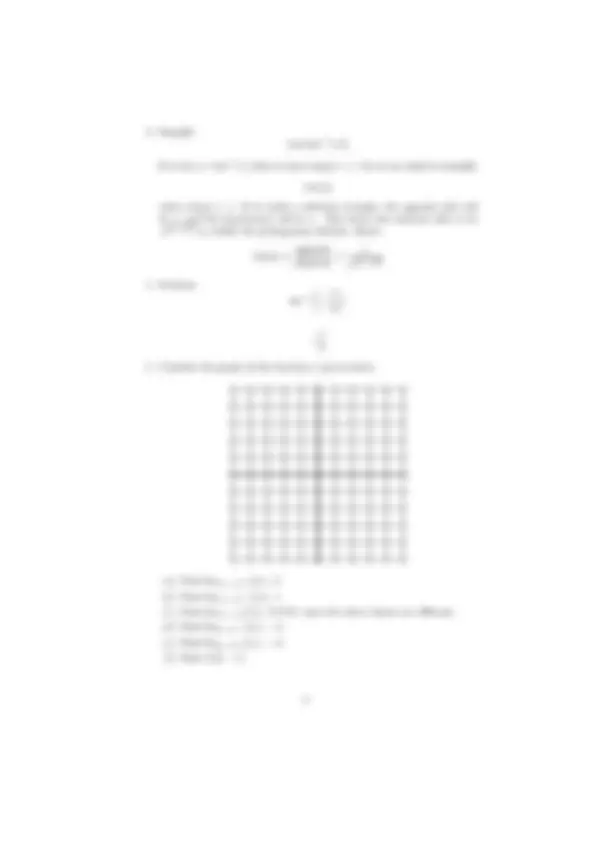



Study with the several resources on Docsity

Earn points by helping other students or get them with a premium plan


Prepare for your exams
Study with the several resources on Docsity

Earn points to download
Earn points by helping other students or get them with a premium plan
Community
Ask the community for help and clear up your study doubts
Discover the best universities in your country according to Docsity users
Free resources
Download our free guides on studying techniques, anxiety management strategies, and thesis advice from Docsity tutors
Material Type: Quiz; Class: Calculus I; Subject: Mathematics; University: Utica College; Term: Spring 2005;
Typology: Quizzes
1 / 2

This page cannot be seen from the preview
Don't miss anything!


February 11, 2005
R\ {− 2 } (b) Evaluate f (2)
f (2) =
(a) Find the composition f ◦ g.
f ◦ g(x) = f (g (x)) = f
x^2
= 2x^2 + 1 (b) Find the composition g ◦ f.
g ◦ f (x) = g (f (x)) = g (2x + 1) = (2x + 1)^2 (c) Find the inverse f −^1 (x). To find the inverse of a function f , substitute y for f (x) and switch the x’s and y’s. So we have x = 2y + 1 When we solve for y we get
y = x − 1 2 and so f −^1 (x) = x − 1 2 (d) Evaluate the difference quotient f (x + h) − f (x) h
f (x + h) − f (x) h
(2(x + h) + 1) − (2x + 1) h = 2 x + 2h + 1 − 2 x − 1 h = 2 h h = 2
sin−^1 (x)
If we let y = sin−^1 (x) then we have sin(y) = x. So we are asked to simplify tan(y) where sin(y) = x. If we make a reference triangle, the opposite side will be√ x, and the hypotenuse will be 1. This forces the adjacent side to be 1 − x^2 to satisfy the pythagorean identity. Hence
tan(y) = opposite adjacent
x √ 1 − x^2
sin−^1
π 6
(a) Find limx→− 2 + f (x). 3 (b) Find limx→− 2 − f (x). 1 (c) Find limx→− 2 f (x). D.N.E. since the above limits are different. (d) Find limx→ 3 − f (x). − 2 (e) Find limx→ 3 + f (x). − 3 (f) Find f (3). − 2